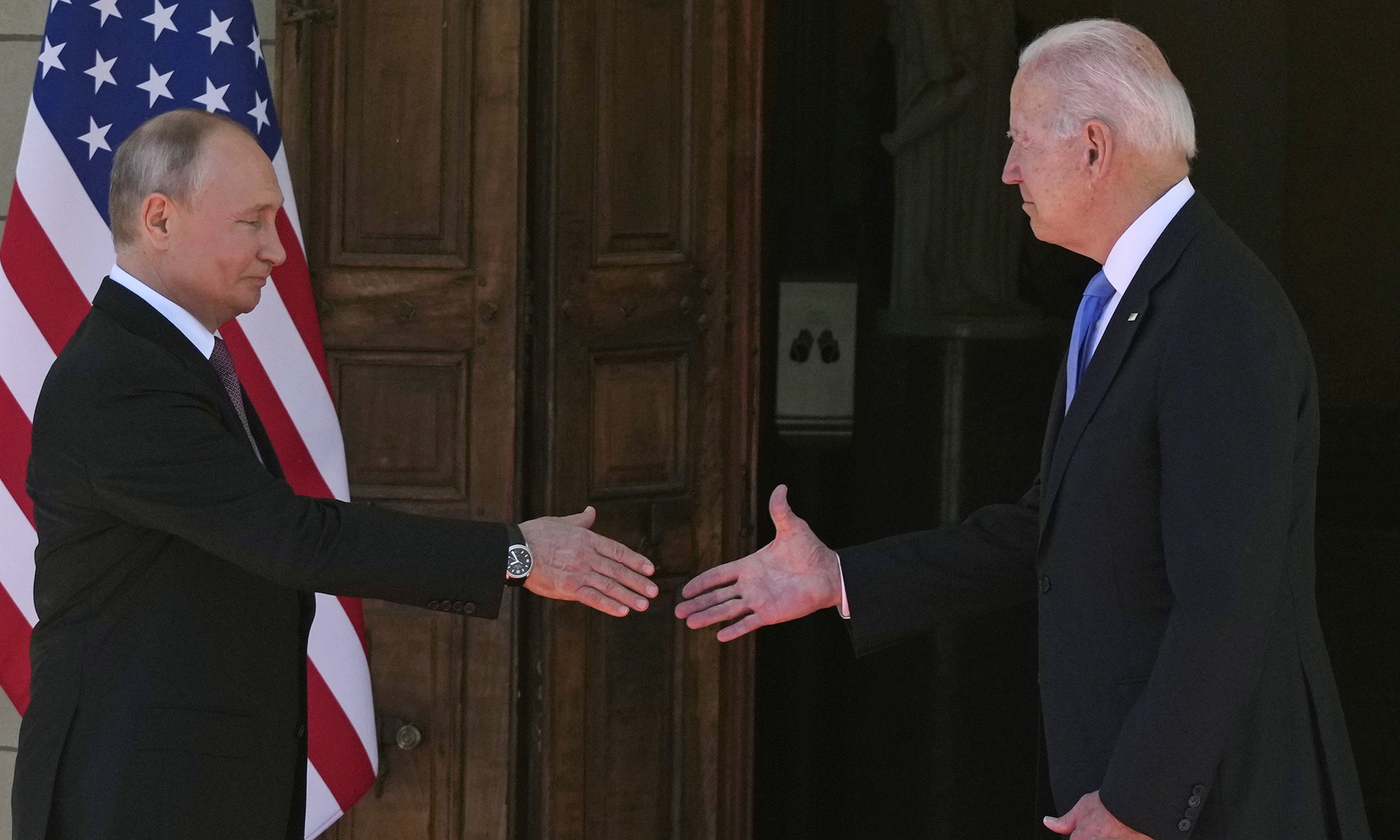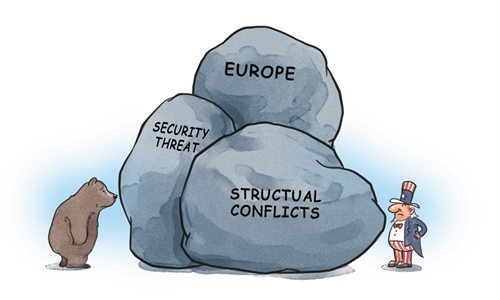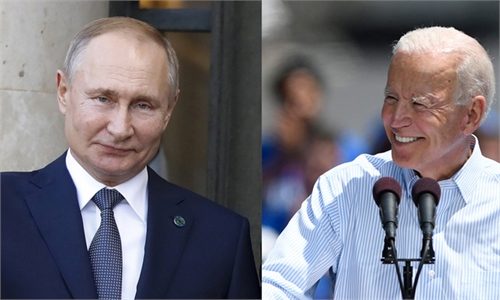
US President Joe Biden and Russian President Vladimir Putin arrive to meet at the Villa la Grange on Wednesday in Geneva, Switzerland. Photo: AP
US President Joe Biden and Russian President Vladimir Putin met in Geneva, Switzerland on June 16. For Biden, talking to Putin face-to-face reinforces the narrative of his "democratic-authoritarian" dichotomies, and helps reduce the unpredictability of Russia as a so-called disruptive power. For Putin, the meeting was a strong proof of Russia's status as a great power. Both sides seem to have achieved their expected goals.
However, just as the US and Russia ambassadors return to their post in Moscow and Washington, Jake Sullivan, the US assistant to president for national security affairs, attacked Russia again. Sullivan said that the US is preparing to impose additional sanctions on Russia over the poisoning of imprisoned opposition leader Alexei Navalny, and continue restrictions against Russian organizations participating in the construction of the Nord Stream 2 pipeline. The interaction mode of "sanctions and countermeasures" between the two countries once again becomes the mainstream trend.
First, the pattern of high-level interactions is expected to continue, but the general framework of the new normal of confrontation between Washington and Moscow is hard to change. In the view of the Russian strategists, Biden does not bear too much political burdens of alleged Russian interference with the 2016 US presidential election - he has more room and flexibility for policy adjustments toward Russia. Moscow may try to keep the high-level interactions between Russia and the US within the framework of the UN, G20 and other multilateral platforms, and seek the gradual thaw of bilateral relations in a small and slow manner. However, against the backdrop of a series of events such as "election interference," poisoning incident, cyberattacks, "anti-Russia" and "anti-Putin" sentiments have become a political red line in Washington and part of the US social consensus.
Therefore, the actual benefits of the Biden administration's improvement of relations with Russia are obviously not in proportion to the political costs. This will still be its strategic priority to turn a game of encounters into protracted struggles.
Second, strategic prediction and crisis management capabilities are expected to improve. But the nature of the structural contradictions between the US and Russia will remain the same. Hotlines including diplomatic, military and even intelligence departments could be reestablished after mutual clarifications of strategic intentions. However, Washington and Moscow still have sharp differences in their views on global order, their own roles, international security and development. Relevant cognitive differences not only cover the discourse system of political elites and public opinions, but also extend to the behavior patterns of these two leaders. Meanwhile, their geopolitical competition, regarding Ukraine and Belarus, has deepened their bilateral contradictions.
Third, Washington and Moscow are expected to lay down a list of areas of limited cooperation, though its overall and strategic value is extremely limited. Yet the two countries remain on the same page to launch negotiations after Biden and Putin agreed to extend the New START (Strategic Arms Reduction Treaty) until 2026. The two leaders discussed cybersecurity and agreed to begin consultations between the two countries. Judging from the short joint statement following the summit, even in terms of nuclear arms control, the field where the two countries have reached a consensus at a high level, their achievable result is highly restricted as well. The US and Russia lack interdependence when it comes to non-traditional security areas, such as economy, finance, technology, education and culture. This makes it even more difficult to improve bilateral relations.
Finally, a slight alleviation of bilateral relations is expected that will be marked by a resumption of dialogue, but the overall hostile ties cannot be totally improved. In the aftermath of US seven-year sanctions on Russia and the largest-scale mutual expulsion of diplomatic personnel in history, communication between the two countries has fallen into stagnation. And it is inevitable that bilateral ties will continue hit the bottom points in the coming years. Using the summit to promote a temporary "truce" in the political and public opinion fields, and to resume contacts between rational officials and intellectual elites is in line with the interest of both sides. But the "Russia threat" still works well for the Biden administration to reshape trans-Atlantic relations. It is the "glue" to bridge US-Europe rift and strengthen the alliance of Western values.
Overall, despite striving to seek common interests, neither Washington nor Moscow is willing to tackle their structural conflicts. Nor do they have the capability or right conditions to do so.
Stable and predictable bilateral interactions will continue to operate within the main pattern - normalized confrontations. During the process of containment and counter-containment, the two countries will not yield an inch on vital issues. The diplomatic tradition of flexibility will become a catalyst for a sudden change in US-Russian relations.
The author is a research fellow at Shanghai Institutes for International Studies. opinion@globaltimes.com.cn


